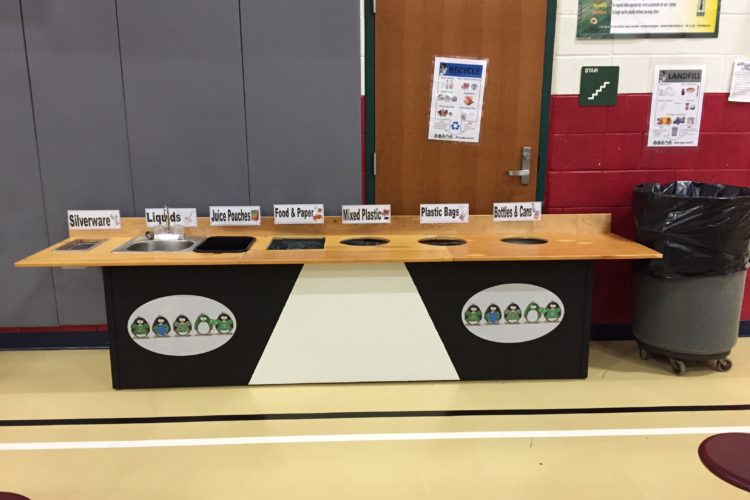We have much more to do and your continued support is needed now more than ever.
Earth Heroes Hope to “Zero Out” Waste
Students at Park Forest Elementary School in State College, Pennsylvania wanted to know, “How can we become a zero waste school?”. Students and teachers reached out to the school district’s Directors of Food Service and Physical Plant, Penn State University, and their county’s Recycling & Refuse Authority for advice. They were told to “start small, look for the low-hanging fruit, and then build on those successes”.
Penn State staff conducted a three-day waste audit and found that lunchtime landfill-bound waste totaled 775 pounds: 172 pounds of refuse and 603 pounds of recyclables. The milk cartons alone totaled 96.5 pounds. There was an additional 389 pounds of compostable organic matter.

Zero Waste Team
After the audit, two Penn State students mapped the school’s waste infrastructure, including waste bin locations. Recycling bins and bottle collection buckets were typically hidden under desks. This restricted access unintentionally taught that recycling was optional, a lesson contrary to the team’s goals.
A Zero Waste Team comprised of students, teachers, parents, custodial staff, Penn State students and the district’s Director of Physical Plant split into groups to address better signage, behavior change, visual demonstrations, and preparation of recycling areas. The first step was to change the sizes and locations of waste receptacles in every classroom and office space to maximize opportunities for recycling.
Students Make A Difference

In 2013, students diverted 11,839 pounds of waste from the landfill. Beyond recycling, they compost organic matter in twelve outdoor chambers and several in-class vermicompost bins (i.e. worms). In 2014, they composted meats, cheeses, bones, oil, and paper towels through a community initiative. As of December 2014, 26,677 pounds of organics have been collected from the lunchroom, classroom, and restroom areas, which has reduced landfill pick-ups from five times a week to twice a week and the waste disposal bill from $534 per month to $261 per month. Lunchroom waste has now been reduced to wax-coated milk cartons and silver-lined potato chip bags.
Earth Heroes
Park Forest Elementary School broadcasts their successes to the community through fairs, exhibits, and presentations. In the future, they will set up community tours showing where their compost and other materials go, develop a waste protocol for outside groups who use the school, and develop an Earth Heroes Recognition Program for students and teachers whose efforts go above and beyond.
Want to become a “zero waste” school? Find out how you can reduce your consumption and waste at Eco-Schools USA.
About the Author: Donnan Stoicovy, Principal of Park Forest





















